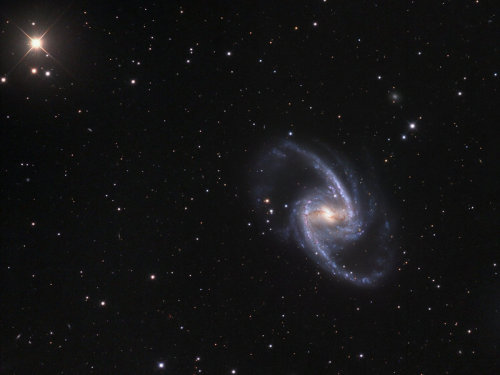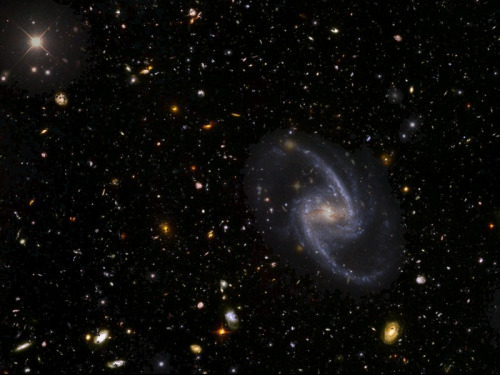Hat’s Off To SpaceX For Releasing Footage Of Their Attempt To Safely Land Their First Stage On A Barge
Hat’s off to SpaceX for releasing footage of their attempt to safely land their first stage on a barge so they could reuse it. The fact that they hit a barge in the middle of the ocean at all is pretty incredible. Their ultimate goal is to soft land it so they can reuse their rocket engines. Of course, the engines would have to be refurbished between every shot, but this could end up being an incredible cost savings for low earth orbit resupply missions. When you watch this video, don’t think about how much money this cost to not work…. but how much future savings something like this could represent!
https://vine.co/v/OjqeYWWpVWK
More Posts from Chris-z-2135-46-blog and Others



Astronaut Alan L. Bean, Lunar Module pilot for the Apollo 12 lunar landing mission, holds a container filled with lunar soil collected while exploring the lunar surface. Astronaut Charles “Pete” Conrad Jr., commander, who took this picture, is reflected in the helmet visor.
Credits: NASA


Milky Way At Kilbear Provincial Park, Canada
js

Apollo’s Wardrobe - Houston, Texas - 1978
via reddit








Terraforming Mars
Let’s All Look at the Moon!
Celebrating Earth’s Nearest Neighbor

Humanity has observed the nighttime sky for millennia, eyeing celestial bodies with wonder. Until the last 50 years or so, telescopes provided our best views of the sky at night. That is, until the Ranger mission broadcast the craft’s descent onto the moon live on March 24, 1965.
+Learn more about Ranger 9
+Watch the video

Our fascination with the moon continues, and since 2010 the organizers of International Observe the Moon Night (InOMN) have turned it into a worldwide, public celebration of lunar science and exploration held annually. One day each year, they invite everyone, everywhere to learn about the moon and to celebrate the cultural and personal connections. We’ll all invited and anyone can host an InOMN event.
+Locations of InOMN Events Around the World
+ Visit International Observe the Moon Night’s site
And, we’re doing our part to let the public know more about our moon. This month’s “What’s up” video is very moon-centric.
+View JPL’s What’s Up for October

Our Night Sky Network at JPL, which bills itself as “astronomy clubs bringing the wonders of the universe to the public,” has a list of astronomy clubs and events across by area, as well as a monthly calendar.
+Learn more
Organizations in our Museum Alliance across the country are also hosting activities. The Museum Alliance was created to be the “front door” to NASA for the world of informal education. The Alliance is a NASA-centric STEAM "community of practice" that includes informal educational organizations, namely, all those outside of the traditional K-12 school system. Our STEAM–Science, Technology, Engineering, Art, and Math–communities include more than 1,400 professionals at more than 700 U.S. museums, science centers, planetariums, NASA Visitor Centers, Challenger Centers, observatories, parks, libraries, camps, and youth-serving organizations as partners in the Museum Alliance.
+Learn more about the Museum Alliance

All us Earth-dwellers can tour the moon via our Moon Tours app that lets you explore the lunar surface from your mobile device. The app includes imagery from lunar orbiters and Apollo missions and is a free download for iOS and Android.
+iOS
+Android
+Check out a full range of NASA apps
Make sure to follow us on Tumblr for your regular dose of space: http://nasa.tumblr.com


Trillions and Trillions
As far as astronomers know, this universe of ours is nearly 14 billion years old and 93 billion light-years across. Only objects between 10 to 12 billion light-years distant will ever be visible due to the expansion of the universe.
Recently, a new survey upped the believed galactic population from around 100 billion to TWO TRILLION.
Images: Left: NGC 1365 Credit: Jason Jennings Right: Hubble Deep Field added to the background of NGC 1365 Credit: NASA/ESA
-
 timallenphoto liked this · 8 years ago
timallenphoto liked this · 8 years ago -
 deadendpirate liked this · 8 years ago
deadendpirate liked this · 8 years ago -
 two-faced-memories liked this · 8 years ago
two-faced-memories liked this · 8 years ago -
 bbc4hw liked this · 8 years ago
bbc4hw liked this · 8 years ago -
 raversfantasyrf liked this · 8 years ago
raversfantasyrf liked this · 8 years ago -
 chris-z-2135-46-blog reblogged this · 8 years ago
chris-z-2135-46-blog reblogged this · 8 years ago -
 warichardson liked this · 8 years ago
warichardson liked this · 8 years ago -
 impossiblestudentwhispersth-blog reblogged this · 8 years ago
impossiblestudentwhispersth-blog reblogged this · 8 years ago -
 impossiblestudentwhispersth-blog liked this · 8 years ago
impossiblestudentwhispersth-blog liked this · 8 years ago -
 m31apollo liked this · 8 years ago
m31apollo liked this · 8 years ago -
 keepbeinghuman liked this · 8 years ago
keepbeinghuman liked this · 8 years ago -
 internalxeyes reblogged this · 8 years ago
internalxeyes reblogged this · 8 years ago -
 tumbla4life liked this · 8 years ago
tumbla4life liked this · 8 years ago -
 daedalusfarms-blog liked this · 8 years ago
daedalusfarms-blog liked this · 8 years ago -
 rykerhaun reblogged this · 9 years ago
rykerhaun reblogged this · 9 years ago -
 rykerhaun liked this · 9 years ago
rykerhaun liked this · 9 years ago -
 tyirsb153 reblogged this · 9 years ago
tyirsb153 reblogged this · 9 years ago -
 tyirsb152 reblogged this · 9 years ago
tyirsb152 reblogged this · 9 years ago -
 tyirsb15 reblogged this · 9 years ago
tyirsb15 reblogged this · 9 years ago -
 granolabarenthusiast reblogged this · 9 years ago
granolabarenthusiast reblogged this · 9 years ago -
 cesarmp007 liked this · 9 years ago
cesarmp007 liked this · 9 years ago -
 epsiloncircle31415 liked this · 9 years ago
epsiloncircle31415 liked this · 9 years ago -
 n-j-s reblogged this · 10 years ago
n-j-s reblogged this · 10 years ago -
 st4rlords liked this · 10 years ago
st4rlords liked this · 10 years ago -
 theusernameiwantedistaken1 liked this · 10 years ago
theusernameiwantedistaken1 liked this · 10 years ago -
 nic-nac97-blog-blog liked this · 10 years ago
nic-nac97-blog-blog liked this · 10 years ago -
 diaryofthecoolestgirl liked this · 10 years ago
diaryofthecoolestgirl liked this · 10 years ago -
 essentialorange reblogged this · 10 years ago
essentialorange reblogged this · 10 years ago -
 chocolatechuckles liked this · 10 years ago
chocolatechuckles liked this · 10 years ago -
 cruisihng liked this · 10 years ago
cruisihng liked this · 10 years ago -
 constructreese reblogged this · 10 years ago
constructreese reblogged this · 10 years ago -
 mstwaterbug reblogged this · 10 years ago
mstwaterbug reblogged this · 10 years ago -
 laura-margatroid reblogged this · 10 years ago
laura-margatroid reblogged this · 10 years ago -
 pajaro--raro reblogged this · 10 years ago
pajaro--raro reblogged this · 10 years ago -
 nodaudaboutitt reblogged this · 10 years ago
nodaudaboutitt reblogged this · 10 years ago
